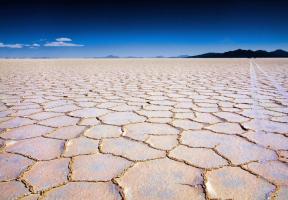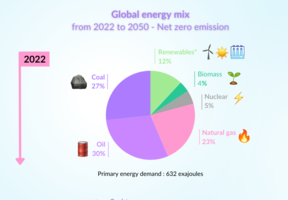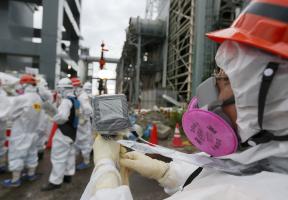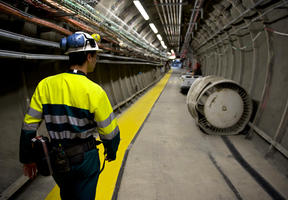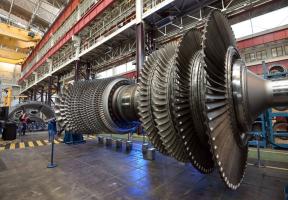Nuclear Safety: Anticipating the Risks
10 min read
Although the nuclear industry is strictly regulated and remarkably safe, the seriousness of accidents, when they do occur, and their immediate global impact and effect on public opinion, make any serious malfunctions unacceptable.

© AFP PHOTO/JUNG YEON-JE - On March 11, 2011, Japan was hit by an earthquake followed by a tsunami. The Fukushima Daiichi nuclear power plant was severely damaged. This was the most severe nuclear accident since Chernobyl.
Nuclear accidents and incidents are rated on the International Nuclear Event Scale (INES), which classifies anomalies having no safety significance at level 0, "incidents" at levels 1 to 3 and "accidents" at levels 4 and above. To give an example, the French nuclear safety authority (Autorité de sûreté nucléaire – ASN) declared 1,018 anomalies, 103 level-1 incidents and two level-2 incidents in 2013. No other more serious incidents or accidents occurred1.
A serious accident (rated 5 to 7 on INES) involves a "meltdown", when the core, i.e., the , gradually melts due to the it generates. Molten nuclear material called corium slowly forms, which can breach the reactor vessel and even the bottom of the containment building – the final containment barrier – leading to the off-site release of large quantities of radioactive material, particularly radioactive iodine and cesium.
Three major accidents
- On March 28, 1979, the Three Mile Island accident in Pennsylvania on the densely populated east coast of the United States was due to a partial melt of the pressurized water reactor core. The situation was brought under control and the contamination was contained within the containment building. The accident was later rated at INES level 5.
- On April 26, 1986, the Chernobyl accident in Ukraine involved a RBMK (Reaktor Bolshoy Moshchnosti Kanalnyy) reactor that was not housed in a containment building. It resulted in significant human, property and environmental damage and was rated at INES level 7. The accident was caused by operator error which led to a loss of reactor control. The graphite at the reactor's core burned for approximately ten days and released large quantities of radioactive particles into the atmosphere, forming a "plume" which passed over a large part of Europe. Thirty-two people died in the three months following the accident, thousands suffered from radiation poisoning and the debate as to how many people were affected in the long term continues to this day.
- On March 11, 2011, all the reactors at the Fukushima nuclear plant in Japan went into automatic shutdown following a high-magnitude earthquake. An ensuing tsunami flooded the electrical generators, leaving the boiling water reactors' cooling systems inoperative. At this point, the short-term meltdown of the cores became unavoidable. The venting of gas caused chemical explosions that seriously damaged the reactor buildings of the four affected units and significant amounts of radioactive materials were released into the atmosphere, prompting the Japanese government to evacuate approximately 120,000 people from the surrounding areas. The accident was rated at INES level 7.
Lessons learned
Following each of the accidents, engineers identified weaknesses in reactors in operation:
- The accident at Three Mile Island led to improvements in reactor operations and in the training given to the operators themselves. It also made people realize that despite all the security systems in place to prevent an accident, a reactor core melt could occur. Equipment was installed to "manage" this type of accident, including filters to reduce the released into the atmosphere when containment building pressure needs to be reduced, and hydrogen recombiners to avoid explosions. These systems have been installed in several nuclear plants (including those in France), but were not in place at Fukushima.
- The accident at Chernobyl led to studies into the dispersion of radioactive particles in the atmosphere and their distribution on the ground. Due to the influence of wind, the particles do not disperse concentrically but form a "leopard-spot" distribution pattern. The accident also resulted in containment improvements for Generation III reactors such as the French European Pressurized Reactor (EPR), including stop plates or "ashtrays" resting on several meters of concrete to contain any corium that may breach the reactor vessel.
- The accident at Fukushima demonstrated the importance of two simple components, water and , in reestablishing reactor control within 48 hours. Both are vital to reactor core cooling operations. Therefore, installing generators off the ground, ensuring mobile backup generators are available and storing water in the immediate vicinity have become essential precautions. Rapid response services capable of acting autonomously across several sites at once have been set up, particularly in France, to respond to natural disaster situations such as that experienced in Japan. Lastly, procedures for managing information made available to the public and organizing population movements have also been reviewed.


